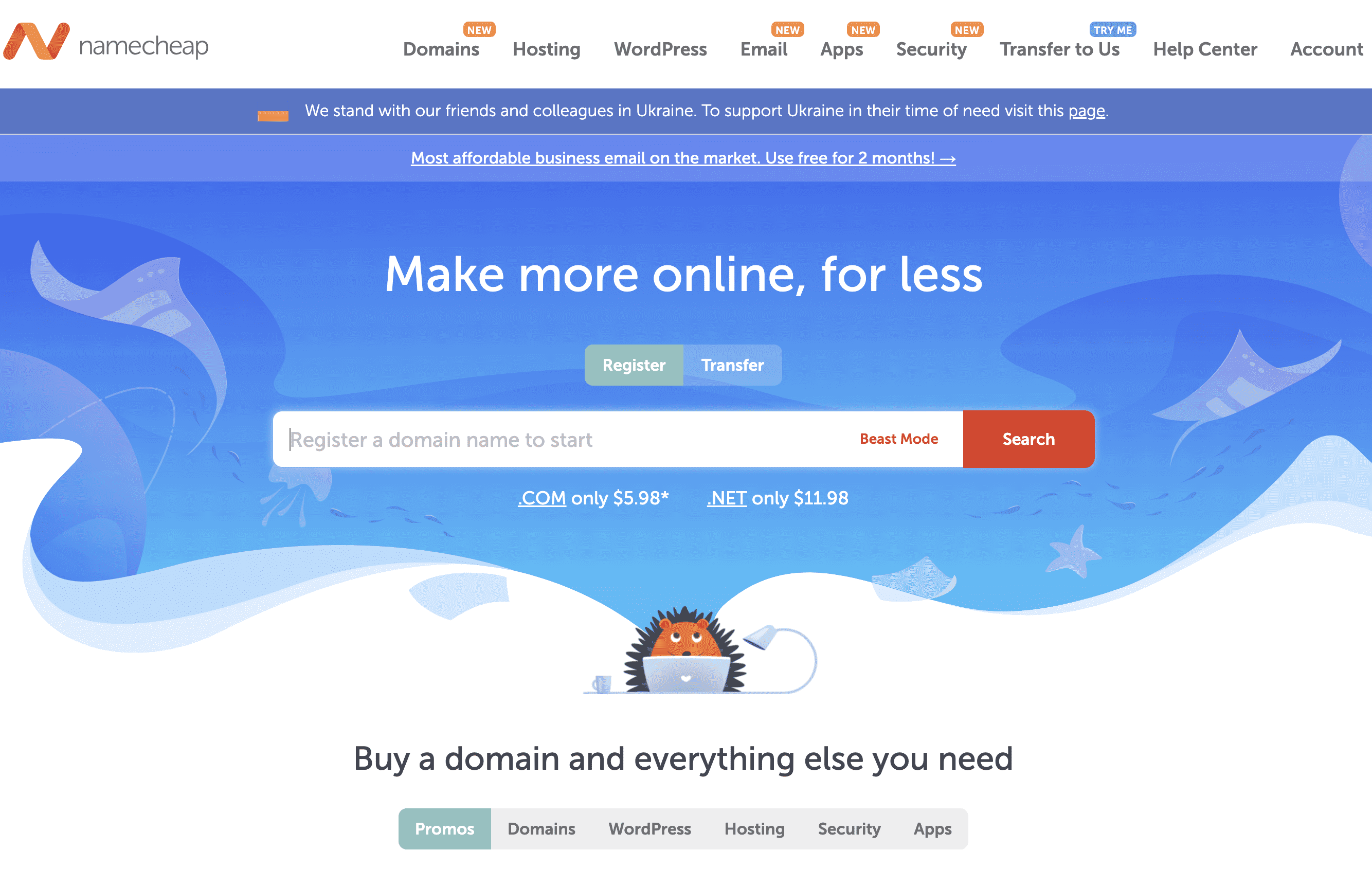Choosing the right domain name for your blog is crucial as it plays a significant role in attracting and retaining your audience. A good domain name should be memorable, relevant, and reflective of your brand or content.
It can also have a positive impact on your search engine optimization (SEO) efforts. By incorporating relevant keywords into your domain name, you can improve your site’s visibility in search engine results and attract more organic traffic.
This comprehensive guide navigates the crucial process of selecting the perfect domain name for your blog, a key step in establishing a strong online presence and brand identity.
The challenge lies in picking a memorable, relevant, and unique domain name that boosts SEO, aligns with your brand, and resonates with your target audience.
Key Takeaways:
- Relevance is key. Your domain name should reflect your blog’s content and resonate with your brand identity.
- Keyword inclusion boosts SEO. Incorporating relevant keywords can enhance search engine visibility.
- Simplicity is golden. Choose a domain name that’s easy to spell, pronounce, and remember. Avoid hyphens, numbers, and special characters.
- Uniqueness stands out. Ensure your chosen domain doesn’t infringe on any trademarks and isn’t already in use.
- Check availability. Use domain registration websites or tools to confirm if your preferred domain name is available.
- Consider future growth. Pick a flexible domain name that allows for potential topic expansion in your blog.
- Register your domain name. Complete this essential step through a reliable domain registrar and remember to renew it regularly to maintain ownership.
How to choose the perfect domain name for your blog
When selecting a domain name for your blog, consider the following tips:
- Consider domain extensions: While .com is the most popular and trusted domain extension, you can also consider alternatives like .net or .co.
- Avoid vague or generic options: Opt for a domain name that is catchy, memorable, and brandable. Avoid generic words that might get lost in the crowd.
- Ensure uniqueness: Your blog’s domain name should be unique and stand out from competitors. It should represent your brand and content effectively.
- Keep it short and simple: A shorter domain name is easier for people to remember. Aim for a name that is 6-14 characters long and easy to spell and pronounce.
- Avoid hyphens, numbers, and doubled letters: These elements can make your domain name messy and harder to read. They can also lead to typos when users try to search for your blog.
- Incorporate keywords: If possible, include relevant keywords in your domain name to enhance SEO and improve your site’s ranking in search engine results.
- Make it easy to type and pronounce: Ensure that your domain name is easy to type as a URL and pronounce when shared verbally.
Remember to register your chosen domain name promptly, as they can be grabbed quickly. Use domain name generators to help inspire ideas that align with your brand and content. Lastly, make sure your chosen domain is not trademarked or already in use to avoid legal issues in the future.
By following these tips, you can choose the perfect domain name for your blog that reflects your brand, attracts your target audience, and helps drive traffic to your site.
Step 1: Consider your niche.
What is your blog about?
When choosing a domain name for your blog, it’s essential to consider the niche or topic of your blog. Your domain name should reflect the content and purpose of your blog, making it easier for readers to understand what your website is all about.
For example, if you are a food blogger, including words like “food,” “recipes,” or “cooking” in your domain name can help potential readers know that your blog focuses on food-related content.
What are your target keywords?
To make your blog more discoverable and rank higher in search engine results, consider incorporating relevant keywords into your domain name. Keywords are words or phrases that users typically search for when looking for specific information or content. For example, if you are a travel blogger who focuses on budget travel, including words like “budget,” “travel,” or “adventure” in your domain name can help attract readers who are specifically interested in budget travel tips and advice.
Using tools like WPBeginner’s keyword generator can help you come up with new keyword ideas based on your main topic. It’s important to find a balance between using keywords and keeping your domain name short and memorable.
Here’s a table to summarize the key considerations when choosing a domain name for your blog:
| Consideration | Recommendation |
|---|---|
| Niche | Choose a domain name that reflects the topic of your blog |
| Keywords | Incorporate relevant keywords to improve search engine visibility |
| Length | Keep your domain name short (under 15 characters) for easy remembering |
| Pronunciation | Make sure your domain name is easy to pronounce and spell |
| Branding | Choose a unique and brandable domain name to stand out |
| Hyphens | Avoid using hyphens in your domain name |
| Flexibility | Pick a domain name that allows you to expand your blog’s topics |
| Availability | Check for existing businesses with a similar name to avoid confusion |
Considering these factors will help you choose a domain name that aligns with your blog’s niche, improves discoverability, and leaves a lasting impression on your audience.
Step 2: Choose a short and memorable domain name.
When it comes to choosing the perfect domain name for your blog, it’s important to keep it short and memorable. A long and convoluted domain name can be difficult for your audience to remember and type accurately. Here are a few things to consider when selecting a domain name:
Your domain name should be easy to remember and type.
A domain name that is short and simple is more likely to stick in the minds of your readers. Avoid using complex or uncommon words that may be difficult to spell or remember. Additionally, try to avoid numbers or hyphens in your domain name, as they can make it more complicated and can easily be forgotten or mistyped.
It should be relevant to your blog’s niche.
Your domain name should reflect the content and purpose of your blog. Including keywords related to your niche can help visitors understand what your blog is about and improve your search engine optimization (SEO). Conduct keyword research to identify relevant terms and phrases that resonate with your audience.
For example, if you have a photography blog, consider including words like “photo” or “camera” in your domain name. This will not only help readers understand the focus of your blog but can also attract the right audience.
Remember, your domain name is an important part of building your brand and establishing your online presence. It’s worth taking the time to find a domain name that is both memorable and relevant to your blog’s niche.
Additional resources:
- Domain Name Generators: These tools can provide ideas and suggestions for unique and creative domain names.
- Shopify Domains: Discover and purchase domain names directly through Shopify, with options for customization and privacy settings.
- Entrepreneur.com: This article offers tips and insights on choosing the perfect domain name for your blog or website.
Step 3: Avoid hyphens and numbers.
When choosing a domain name for your blog, it’s best to avoid using hyphens and numbers. Here’s why:
Hyphens:
Using hyphens in your domain name can make it harder for users to remember and type. It can also make your domain seem less professional and trustworthy. For example, if your desired domain name is already taken, you might be tempted to use hyphens to differentiate it, but this can lead to confusion and loss of traffic. It’s best to come up with a unique and memorable domain name that doesn’t rely on hyphens.
Numbers:
Similarly, using numbers in your domain name can create confusion. Users may be unsure whether to type out the number or use the numeric symbol. For example, if your blog is about fitness, a domain name like “fit4life.com” might look fine, but users may wonder if they should type out the number “4” or use the digit “4”. To avoid this confusion, it’s better to stick with words and letters in your domain name.
Remember, your domain name should be easy to remember, type, and convey your blog’s brand and content. By avoiding hyphens and numbers in your domain name, you can create a more professional and user-friendly web address.
Stay tuned for our next section on how to make your domain name unique and brandable!
Step 4: Check for availability.
Make sure the domain name you want is available.
Once you have brainstormed and narrowed down potential domain name ideas for your blog, it’s essential to check if the names you want are available for registration. Here are a few steps to help you determine the availability of your desired domain name:
- Use a domain registrar: One of the easiest ways to check domain name availability is by using a reputable domain registrar such as GoDaddy, Namecheap, or Bluehost. These registrars have search tools that allow you to enter your desired domain name and see if it’s already taken.
- Look for variations: If your first-choice domain name is unavailable, consider looking for variations of the name. For example, you can try adding a prefix or suffix, using hyphens, or changing the domain extension (.com, .net, .org, etc.).
- Check trademark databases: It’s important to ensure that your chosen domain name doesn’t infringe on any trademarks. You can use online trademark databases like the United States Patent and Trademark Office (USPTO) or international trademarks databases to search for any trademarks that may exist.
- Consider domain marketplace: If your preferred domain name is already registered, you can explore domain marketplaces where individuals or businesses sell their domain names. Websites like Sedo or Flippa offer a platform for buying and selling domain names.
It’s crucial to secure your desired domain name as soon as possible. Domain names are registered on a first-come, first-served basis, and if you delay, someone else might register the name you want. Once you have confirmed the availability of your domain name, you can proceed with the registration process through your chosen domain registrar.
Remember, choosing the perfect domain name for your blog is an important decision that can impact your brand identity and online presence. Take the time to select a domain name that reflects your blog’s content, is memorable, and aligns with your brand’s goals.
Step 5: Register your domain name.
Once you’ve found a domain name you like, you need to register it.
Now that you have found the perfect domain name for your blog, it’s time to register it. Registering a domain name involves purchasing the rights to use that specific name for a certain length of time. This ensures that no one else can use the same domain name for their website.
To register your domain name, follow these steps:
- Choose a domain registrar: There are many domain registrars available, such as GoDaddy, Bluehost, and Domain.com. Research different registrars to find one that offers the features and pricing that suit your needs.
- Check availability: Use the registrar’s search bar to see if your chosen domain name is available. If it is already taken, you may need to get creative and consider variations or alternative domain extensions.
- Complete the registration process: Once you have found an available domain name, add it to your cart and proceed to the registration process. You will be required to provide your contact information, including your name, address, and email. Be sure to double-check your information for accuracy.
- Choose registration length: Decide how long you want to register your domain name for. Most registrars offer options ranging from one to ten years. Consider the length of time you plan to use the domain and choose accordingly.
- Make the payment: Provide the necessary payment details to complete the registration process. Prices for domain registration can vary depending on the registrar and the length of registration you choose.
- Domain privacy: Consider adding domain privacy to protect your personal information from being publicly available. This additional service helps prevent spam and protects your privacy online.
After completing these steps, you will officially own the rights to your chosen domain name. Congratulations! Now you can connect your domain to a hosting provider and start building your blog.
Remember, choosing the perfect domain name for your blog is an important decision. It should reflect your brand, be easy to remember and type, and align with your blog’s content and goals. Take the time to find a domain name that truly represents your blog and resonates with your target audience.
How to Choose the Perfect Domain for Your Blog
Choosing the perfect domain name for your blog is a crucial step in establishing your online presence. Here are some factors to consider when selecting a domain for your blog:
- Relevance: Your domain name should reflect the content of your blog and align with your brand identity. It should give visitors an idea of what they can expect when they visit your site.
- Keyword inclusion: Including relevant keywords in your domain name can help with search engine optimization (SEO) and improve your website’s visibility in search results.
- Simplicity: A domain name should be easy to spell, pronounce, and remember. Avoid using hyphens, numbers, or other special characters that can make it confusing for visitors.
- Extension: Consider which domain extension best suits your blog’s purpose. The .com extension is the most popular and widely recognized, but there are other options like .net, .org, and country-specific extensions that may be relevant to your target audience.
- Uniqueness: Choose a domain name that stands out from the competition and doesn’t infringe upon any trademarks or copyrighted material. Conduct thorough research to ensure your chosen domain name is not already in use.
- Length: Keep your domain name as short as possible to make it easier for visitors to type and remember. Long domain names can be cumbersome and increase the chances of misspellings.
- Check availability: Before finalizing your domain name, check its availability using domain registration websites or tools. Make sure the name is not already registered by someone else.
- Consider future growth: Choose a domain name that allows room for your blog’s potential growth and expansion. Avoid using specific locations or topics that may restrict your blog’s scope in the future.
Once you have decided on the perfect domain name, you can register it through a domain registrar. Many hosting providers offer domain registration services, or you can use independent registrars like GoDaddy or Namecheap.
Note: It’s important to renew your domain registration regularly to maintain ownership of your domain name.
Conclusion
Choosing the perfect domain name for your blog is a significant decision that can impact your online presence and brand identity. Consider factors such as relevance, keyword inclusion, simplicity, uniqueness, extension, length, and future growth when selecting a domain.
Remember to check the availability of your chosen domain name and register it through a reputable domain registrar. With a well-chosen domain name, your blog can attract more visitors, improve search engine visibility, and establish a strong online presence.





